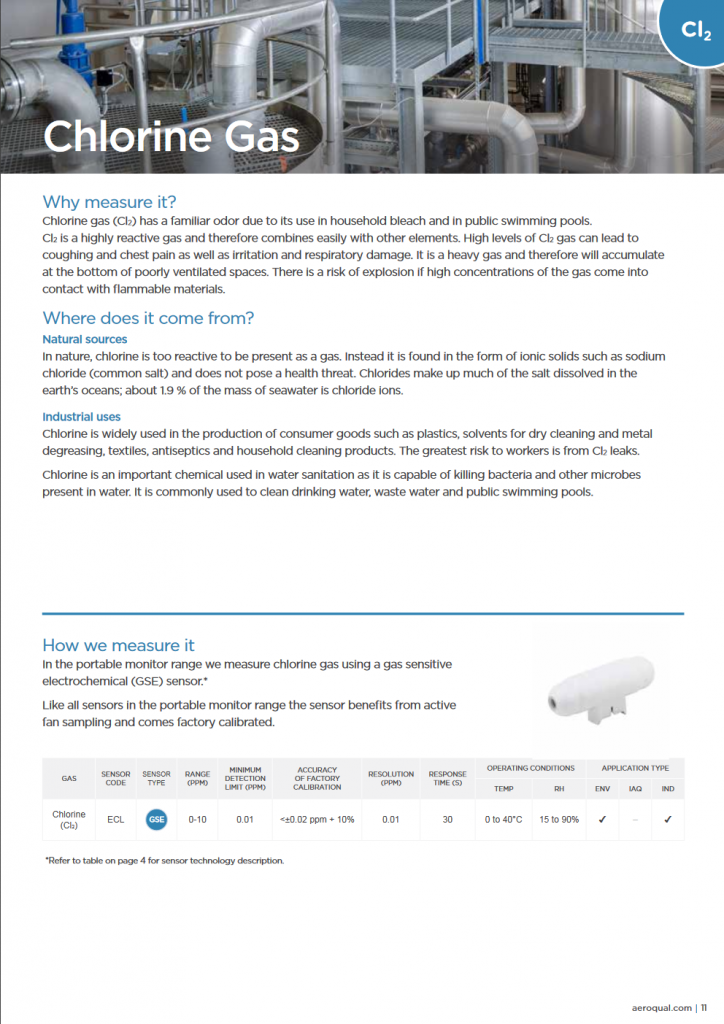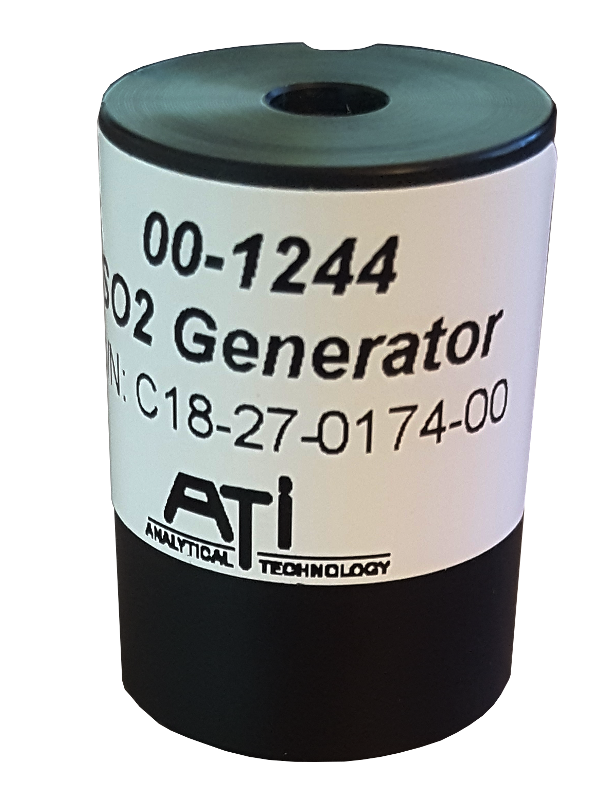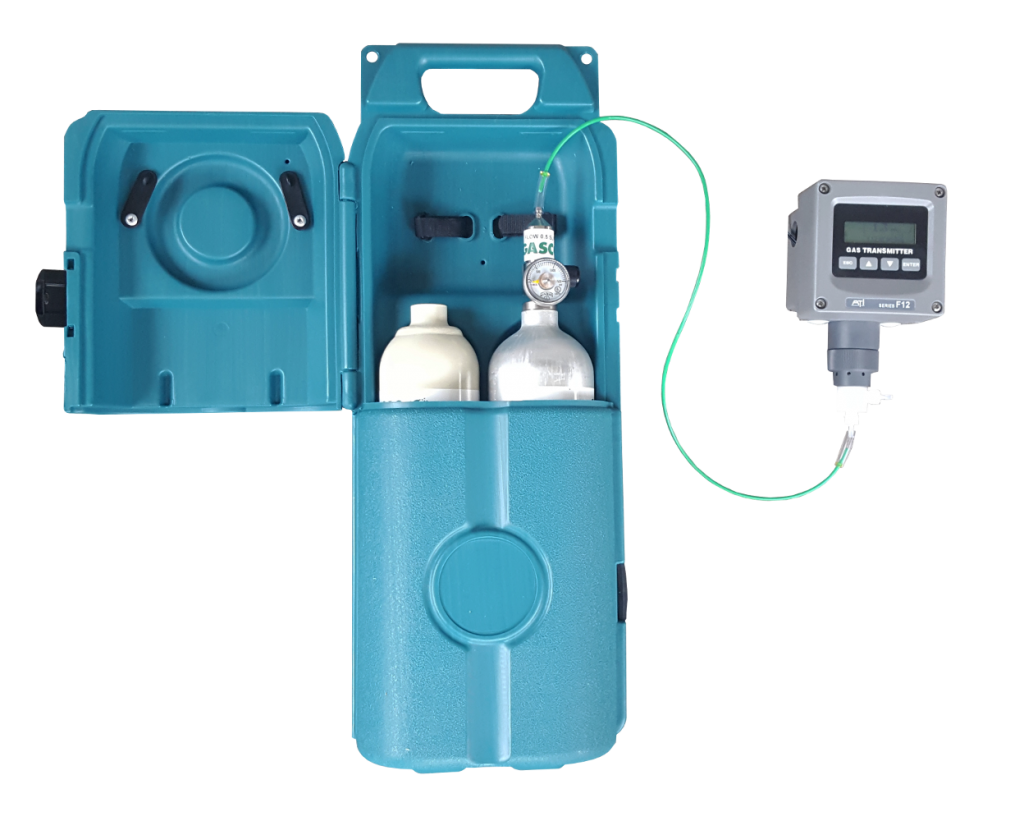Why measure it?
Chlorine gas (Cl2) has a familiar odor due to its use in household bleach and in public swimming pools. Cl2 is a highly reactive gas and therefore combines easily with other elements. High levels of Cl2 gas can lead to coughing and chest pain as well as irritation and respiratory damage. It is a heavy gas and therefore will accumulate at the bottom of poorly ventilated spaces. There is a risk of explosion if high concentrations of the gas come into contact with flammable materials.
Where does it come from?
Natural Sources
In nature, chlorine is too reactive to be present as a gas. Instead it is found in the form of ionic solids such as sodium chloride (common salt) and does not pose a health threat. Chloride make up much of the salt dissolved in the earth’s oceans; about 1.9% of the mass of seawater is chloride ions.
Industrial Uses
Chlorine is widely used in the production of consumer goods such as plastics, solvents for dry cleaning and metal degreasing, textiles, antiseptics and household cleaning products. The greatest risk to workers is from Cl2 leaks.
Chlorine is an important chemical used in water sanitation as it is capable of killing bacteria and other microbes present in water. It is commonly used to clean drinking water, waste water and public swimming pools.
How we measure it
In the portable monitor line we measure chlorine gas using a gas sensitive electrochemical (GSE) sensor.
Like all Aeroqual sensors in the portable monitor range the sensor benefits from active fan sampling and comes factory calibrated.
More information on the Aeroqual Gas Detection Monitors can be found on Gas Sensings website, using the links below.
Series 200 with Chlorine sensor
Series 300 with Chlorine sensor



